4th Rock from the Sun: Human Exploration of Mars – the Planetary Geology Research Projects 2016
Forty years ago, in the summer of 1976, NASA placed two spacecraft in orbit around Mars and then safely got the Viking 1 and 2 landers to the surface. I was all of 8 years old, but have a distant memory of those the first images from the Martian surface being broadcast over the evening news. The discoveries that NASA’s Viking program made were seminal, and it took nearly two decades for the United States to have its next successful mission to Mars.
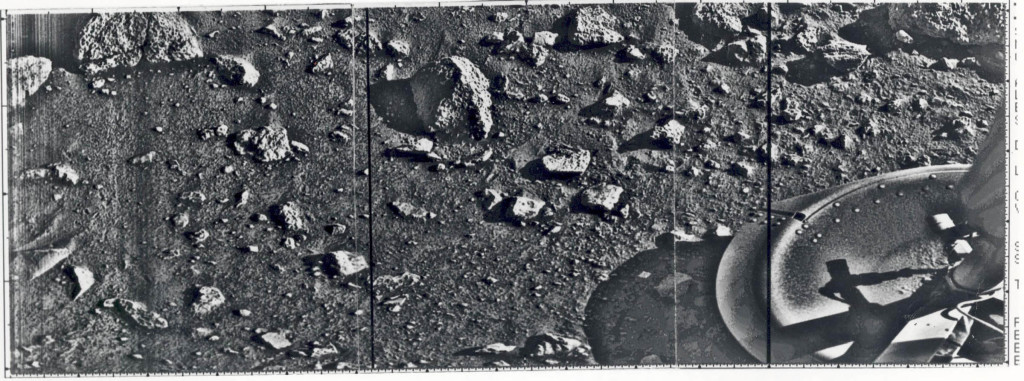
First full image from the Viking 1 lander (July 20, 1976). From http://www.nasa.gov/images/content/188953main_First_Mars_full.jpg
This spring I’m co-teaching Planetary Geology with Dr. Joel Levine, he’s a research professor of Applied Science at W&M and a retired NASA scientist. Joel spent his career investigating the atmosphere of Mars, and in 2007 he co-chaired the Mars Exploration Analysis Group, an international panel of 29 scientists that identified 58 potential landing sites for the first human landing on Mars. Joel makes a cogent and persuasive argument for why humans need to explore Mars – check out his TED talk.
In 2013 we asked the students in our Planetary Geology course to analyze a number of proposed Mars landing sites for scientific exploration by humans. The students formed into teams of three and described the topography, geology, and significance of 22 of the proposed landing sites. Additionally, the teams developed “field trip” routes or traverses for the astronauts to address the key scientific questions about the site. The results of the students’ analysis are available at our Geology of Proposed Landing Sites for the Human Exploration of Mars website.
The 2016 Planetary Geology class just presented their findings for 10 different proposed landing sites on Mars.
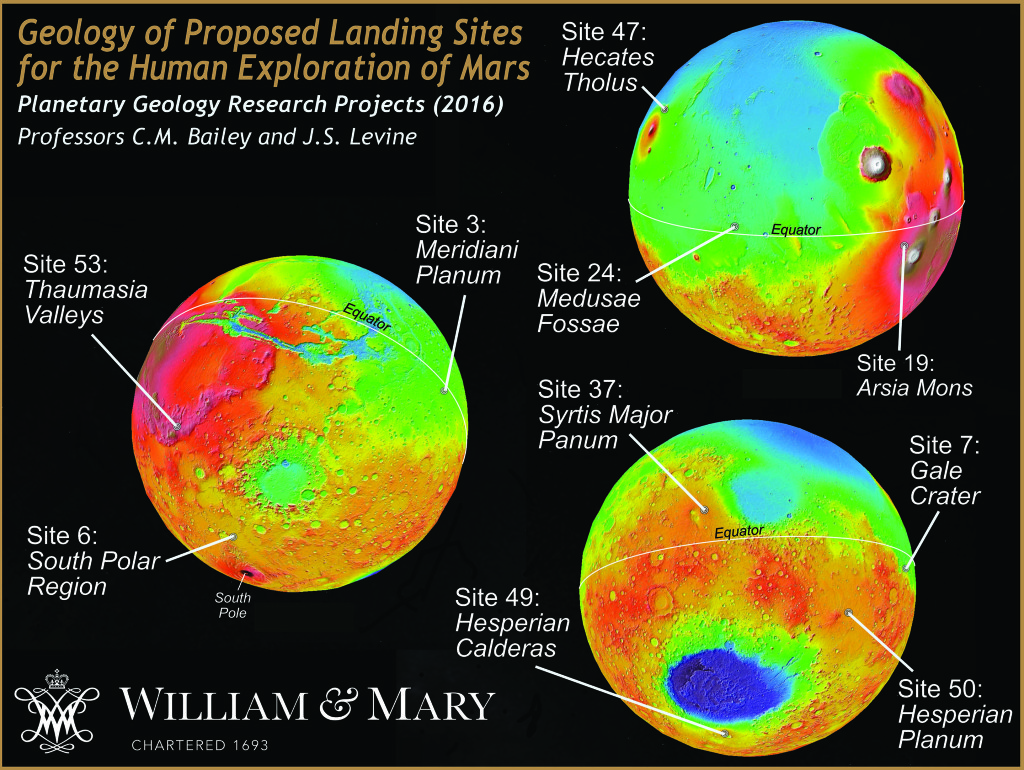
Proposed Mars Landing Sites for the Human Exploration of Mars researched by the 2016 William & Mary Planetary Geology class.
Our special guests for the presentations were two NASA veteran Mars Viking mission managers: Gus Guastaferro and Howard Robbins. Guastaferro was Viking Executive Engineer. Robbins was Viking Manager of Mission Operations and Integration. It was exciting to have members of the Viking program in the audience and asking questions about the proposed landing sites. Gus and Howard also demonstrated an infectious enthusiasm for exploration, and passed that on to our class of budding planetary scientists.
The landing sites were a diverse lot, ranging from the South Polar region to old highland terrains to craters filled with sedimentary deposits. Below is a word cloud with some of the key terms used during the research presentations, a few reoccurring themes are evident. Over geologic time Mars has lost much of its atmosphere, and dramatic climate change followed. Although cold and dry, the modern surface of Mars is a dynamic environment, and was highlighted in many of the research presentations.
For me this project is an excellent entrée into the realm of research: at William & Mary our undergraduates are contributing new and meaningful knowledge about our Solar System. For some students, their first research foray in this class leads to senior research projects in planetary geology, over the past few years we’ve had geology students complete theses examining Mercury, Venus, Mars, and Europa.
As the semester runs its course, the Planetary Geology students will revise their presentations and upload their work to the Geology of Proposed Landing Sites for the Human Exploration of Mars website. In July, NASA is hosting a 40th anniversary conference to celebrate Viking’s achievements, frame what we’ve learned about Mars in the past four decades, and discuss what’s to come. Some of the William & Mary planetary geology students will be at this meeting and presenting the results of their Mars Landing Site research project. In a decade or two, it’d be no surprise to find a William & Mary educated planetary geologist on the crew of that first human mission to Mars.
Comments are currently closed. Comments are closed on all posts older than one year, and for those in our archive.

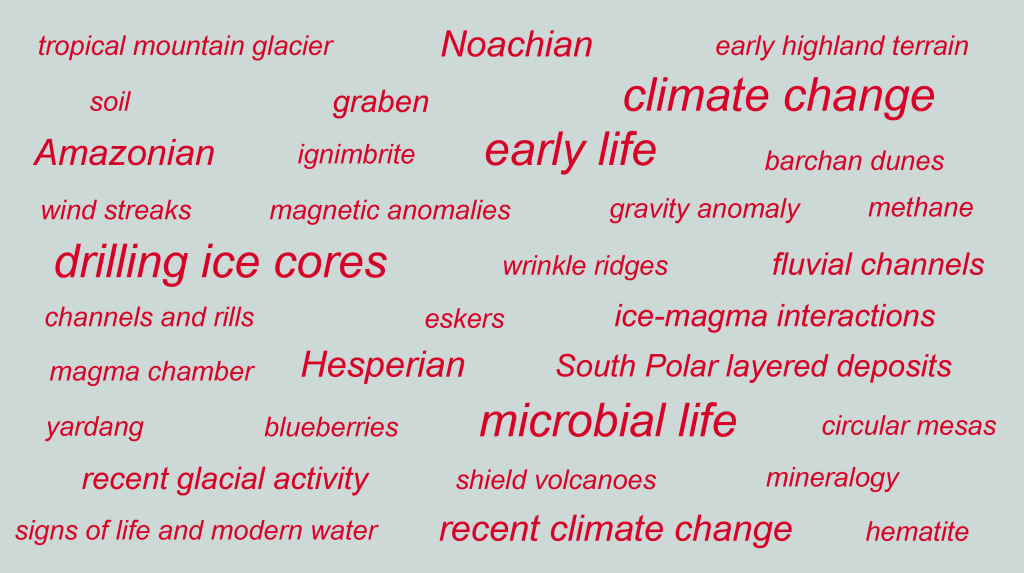
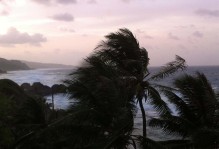

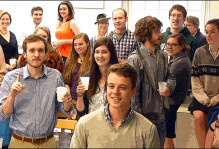
Wow that is cool! To have experts/veterans from the field asking you questions- I would have been pretty nervous (but excited) for my presentation! It’s certainly motivation to work extra hard on that one.